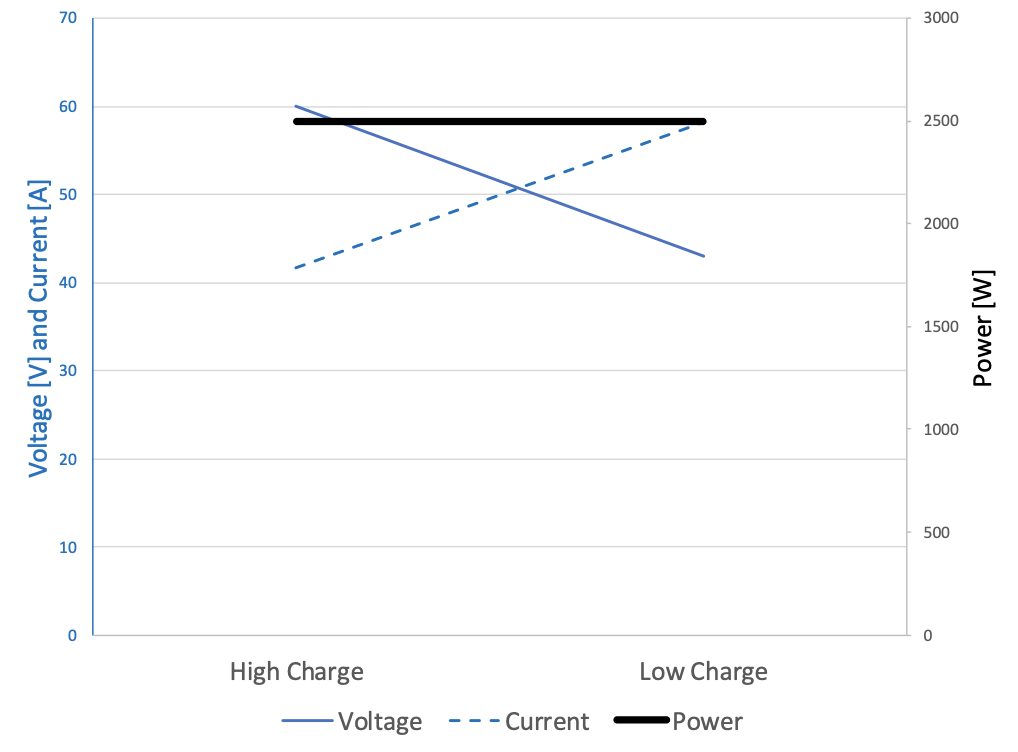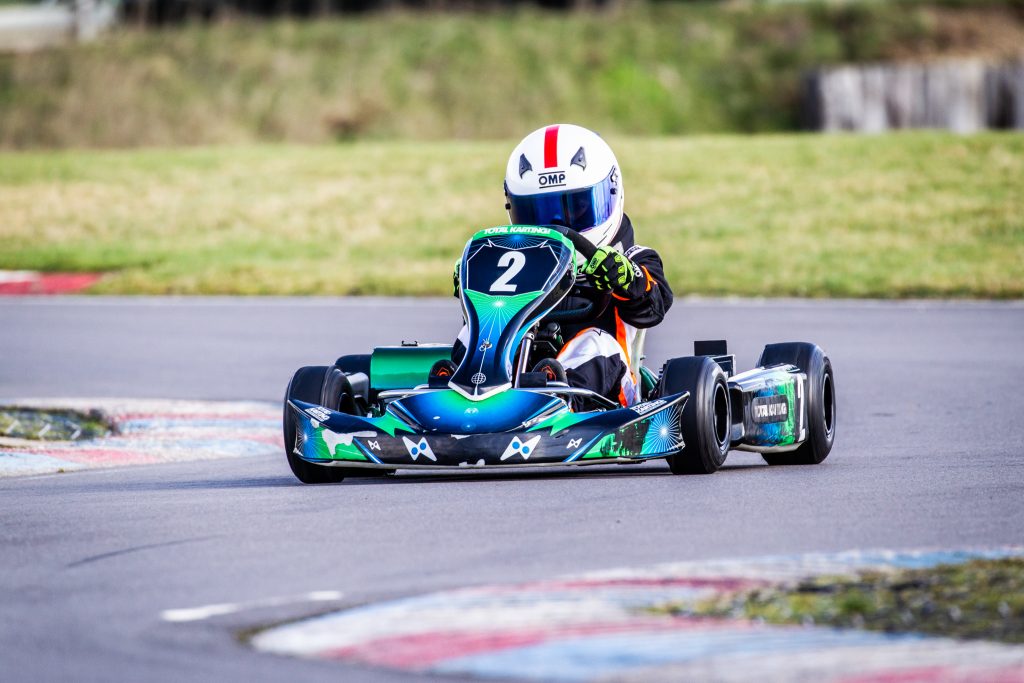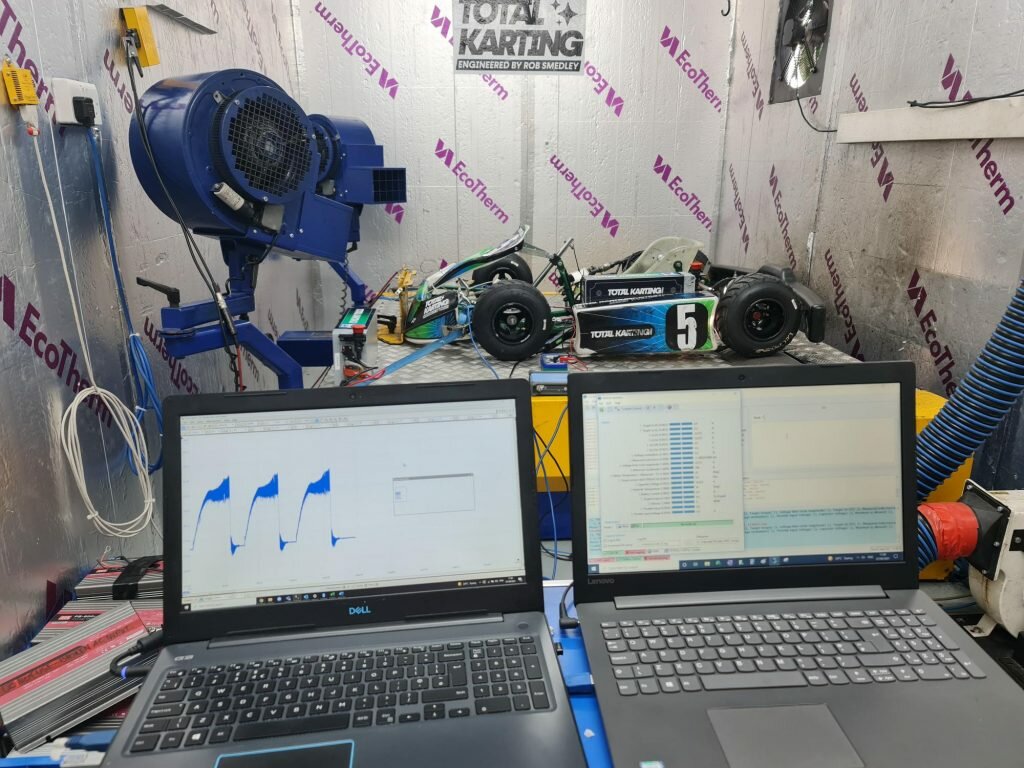Technology Team
Total Karting Motorsport
Our previous posts looked at how the e-kart works and discussed whether the e-karts can go faster when we looked at how an e-karts power is determined. This time we’re going to share some more information about charging, it’s challenges and what’s new.
Let’s start with a quick recap on power output:
The electrical power (P) is calculated by the product of voltage (V) and current (I): Power = Current x Voltage
Voltage is the difference in electrical charge between two points like the terminals of a battery, while current is how fast the charge can travel between those two points. Imagine a bucket of water with a hole in the bottom- the amount of water in it is the voltage and the current is the amount of water flowing out. If we have a high current multiplied by a low voltage we get the same power as a low current multiplied by a high voltage.

The Bambino e-karts have one battery and around 2.7kW of power, while the Cadet e-karts have two batteries and about 5.5kW of power. This means we are using the batteries at 2.7kW each at maximum power. In terms of average power used this is about 2.3kW per lap, this is not the full 2.7kW since there are times when no power is needed, for example when braking.
THE CHARGERS

The chargers work at 0.6kW, they are capable of doing more but this is limited because the battery cannot be charged more than a certain current to avoid damage. This means that we are 4.5 times quicker (used KW of 2300 / charged W of 0.6) in discharging the battery than we are at charging it. This is an intrinsic challenge of all electric vehicles although is especially obvious in electric racing vehicles because of the amount of time spent at full throttle.
The challenge has led to a lot of development on fast charging for road cars to make them easier to live with. These fast-charging systems work by raising the charging voltage while maintaining the same current (as this is the real limitation) so that the power is higher.
However, in motorsport the governing body has dictated that we need to stay below 60V for safety to avoid potential risk associated with higher voltages. This means that the charging, for now, is slower than we would all like but with more development and increased safety systems, charging will become faster meaning even less time charging and more time racing!
WHAT DOES THIS MEAN FOR THIS SEASON?
This year we have even more karts in the fleet to charge, if we plugged them all in to charge at the same time it would place a huge amount of demand on any power outlet. To prevent anything from tripping (like when you have the TV, all the lights, dishwasher, washing machine, tumble dryer and kettle on at the same time causing it to trip electric in the house), the bigger fleet comes with a new charging system which is faster, more efficient, with even better safety standards and importantly allows us to charge the full fleet at once.
For the next generation we will continue to develop charging methods and operational efficiency with the objective of reducing the time the karts are not running. We are also exploring the possibility of recording charging phases (measuring how fast the batteries charge at high levels of charge vs. low levels of charge) to see if this can be optimised to reduce charging time further.


